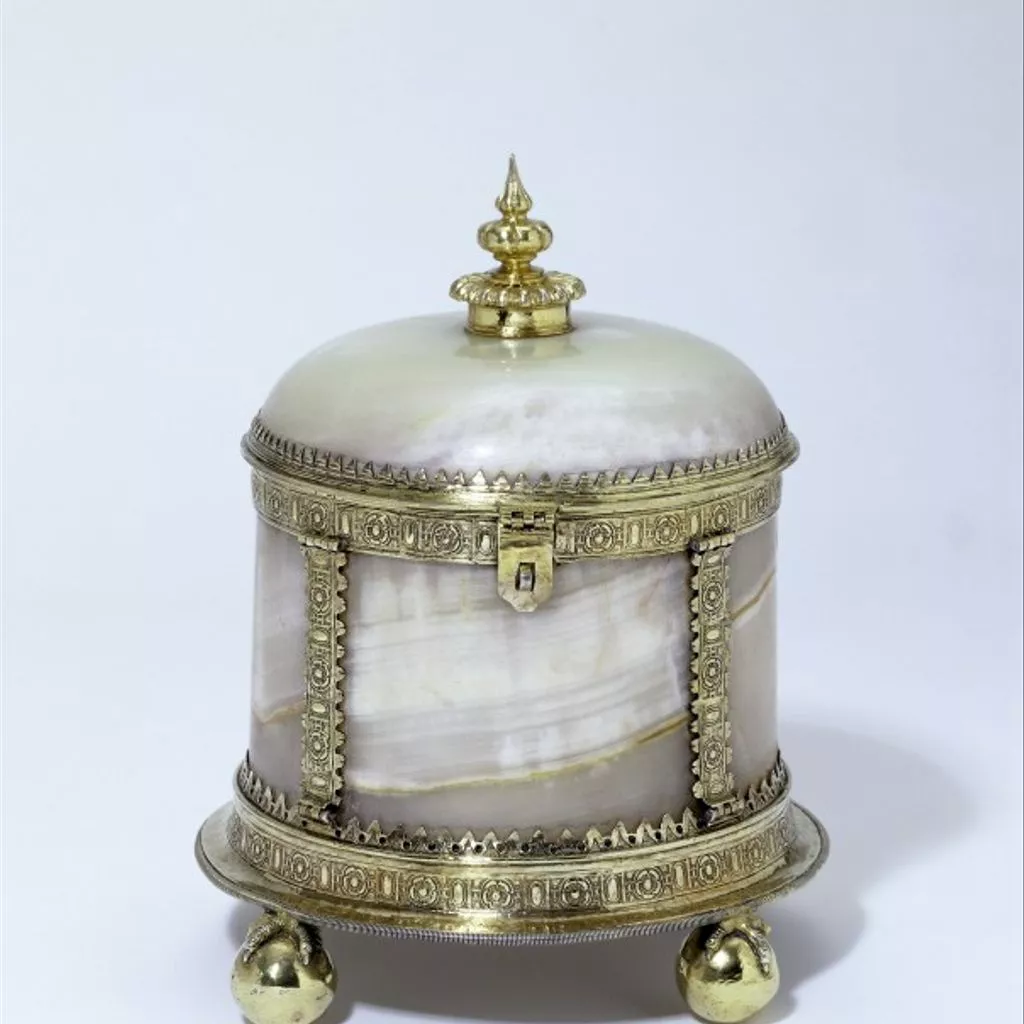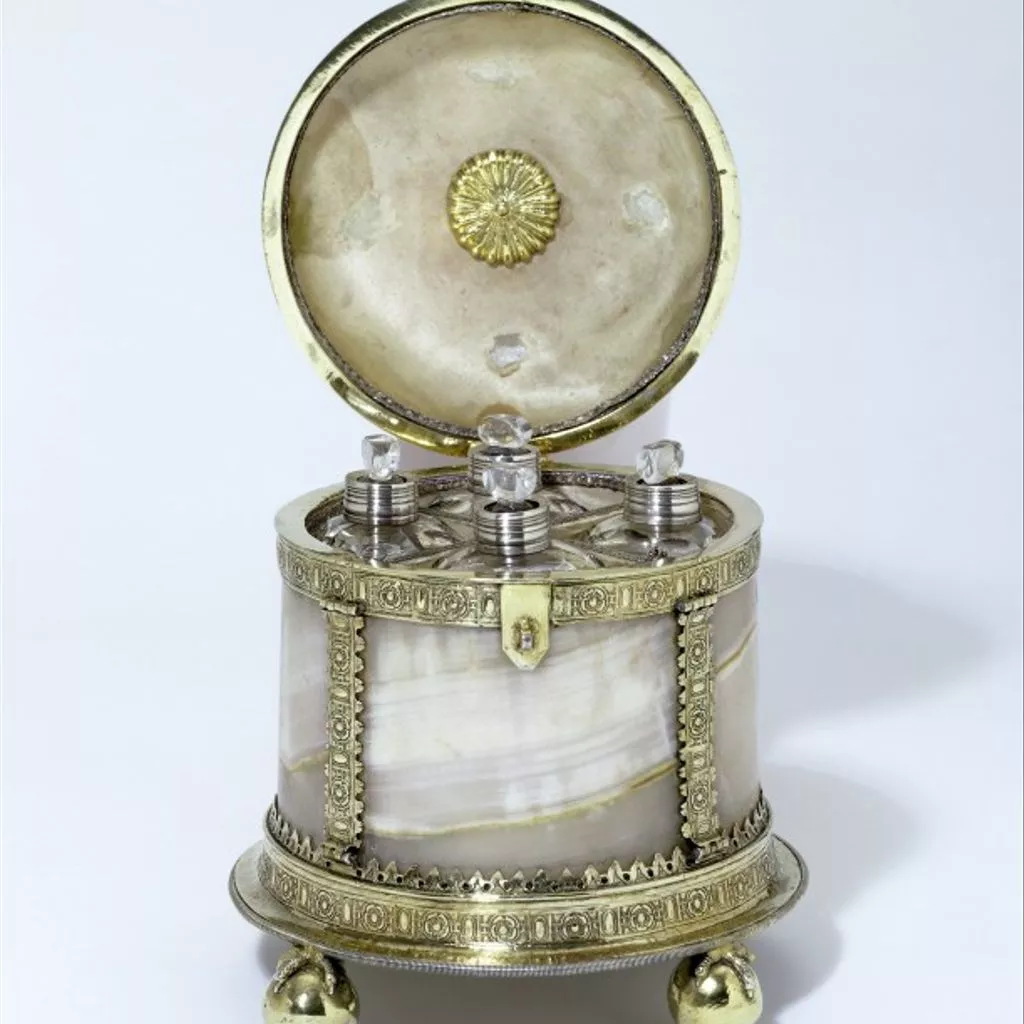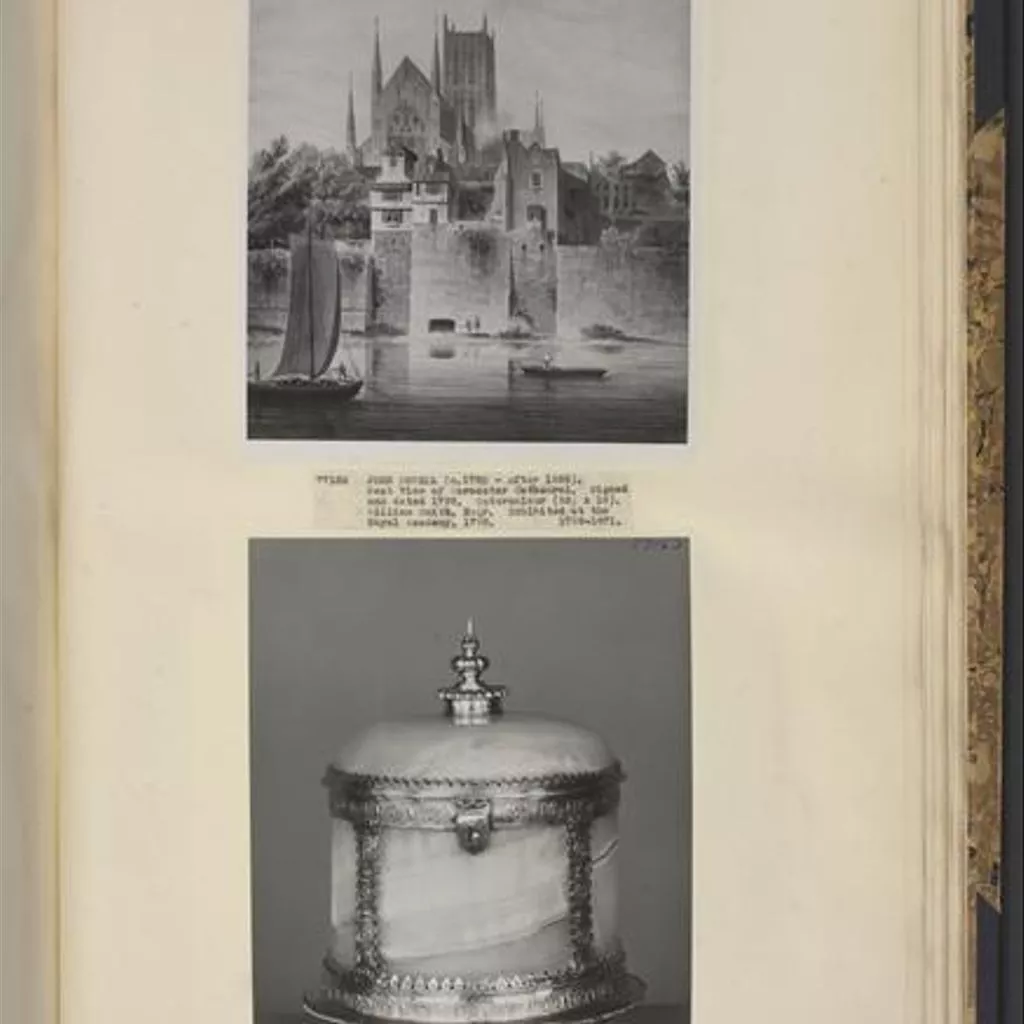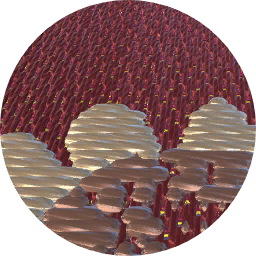1600 / 1610, London
1600 / 1610, London
- Identifier
- 24-1865
- Collection
- Technique
- Embroidery 92%
- Embroidery 99%
- Embroidery 90%

- Embroidery 80%

- Embroidery 80%
- Embroidery 88%

- Depiction
- Floral motif 54%

- Floral motif 62%

- Floral motif 54%
- Dimension
- 15.100000381469727 cm (diameter)12.399999618530273 cm (diameter)19 cm (height)1.8960000276565552 kg (weight)
- Production time
- Production place
Description
Luxurious personal items made from precious metals and hardstones were used to show taste and social status.
History & Design
Alabaster was highly prized and often transformed into spectacular objects by the addition of gold or silver-gilt mounts. (The same mounts are found on a mother-of-pearl bowl also in the Museum's collection.) The taste for these small, precious objects lasted throughout the 16th century and into the early 17th century.
Material & Making
Ancient alabaster is a hard, carbonate mineral, often called 'oriental' alabaster as it was said to have come from the town of Alabastron, in Egypt. This example is made from 'modern' alabaster, a soft, finely-grained variety of gypsum, or limestone. It probably originated in the large deposits found in Britain, in the Midlands, which were extensively worked from the 14th century. The soft material is easy to carve and can be highly polished. The Dyneley Casket





